The Power T is an extremely problematic, and increasingly common, cause of Timing problems in baseball pitchers and position players. It is characterized by the pitcher's arms stretching straight out and away from the body, as Matt Harvey is doing in the picture below.

Matt Harvey Making the Power T
The Power T is often taught using, or the result of the use of, cues like "stay long" and "reach back."
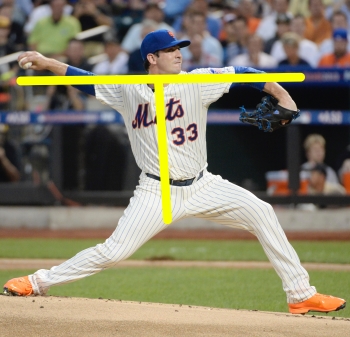
Matt Harvey Making the Power T
What distinguishes the Power T from other similar but benign arm actions, and what makes the Power T dangerous, is when it is held as long as possible, in the worst case into or even at Foot Plant.
Holding the Power T into, or in the worst case at, Foot Plant will very reliably create a problem with pitchers' Timing. While that WILL often yield a short-term velocity boost, recent research demonstrates that Timing problems are the root cause of many of the arm problems we are seeing in pitchers.
Power T
I have a good understanding of the ultimate flaw in Matt Harvey's pitching mechanics that created his problems. However, until recently I didn't know what cue was likely causing his Timing problem.
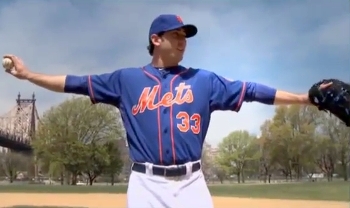
Matt Harvey's Power T
However, this spring I met a young ballplayer who seems to have been taught the same thing that Matt Harvey was taught.
He calls it the Power T.
I believe that, when coaches teach pitchers to make the Power T, and do/hold it into Foot Plant, they think they are teaching pitchers to do what Roy Halladay did. However, and as I discuss in How Roy Halladay (Actually) Threw the Ball, they are missing something important.
Matt Harvey and the Power T
Matt Harvey is an example of a pitcher who employs the Power T and who, in my opinion, can't stay healthy as a result.
Notice how Matt Harvey's arms are extended and his fingers are on top of the ball.
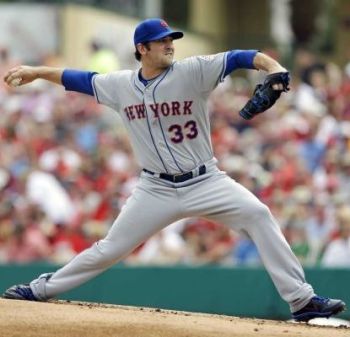
Matt Harvey's Power T
While pitching, Matt Harvey seems to try to hold this position for as long as possible, often holding the Power T into or through foot plant.
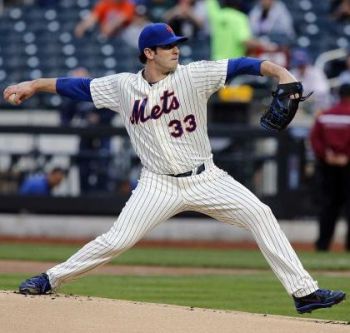
Matt Harvey's Power T
As a result, his arm is late and out of position at Foot Plant, which is the definition of a Timing problem.
That increases the load on his arm, enabling him to throw harder but also placing too much stress on his elbow (and his shoulder).
I don't know exactly what Matt Harvey was taught and what cues were used to develop his arm action. However, I have worked with kids who have been taught something called the Power T that looks very much like what Matt Harvey does..

Matt Harvey
The Power T looks just like it sounds; at foot plant, or as close to foot plant as possible, the pitcher's arms should be horizontal and sticking out from their sides.

Matt Harvey
Luke Farrell is another pitcher who makes the Power T and holds it into Foot Plant

Luke Farrell
I'm not sure where this idea originated, but I believe it started with Tom House's Flex T position and drill.
I'm not sure if having the forearms flat is a key part of the Flex T position or not. At a minimum, the fact that the position of the forearms isn't explicitly laid out, and is often demoed with the forearms flat, is part of the problem.
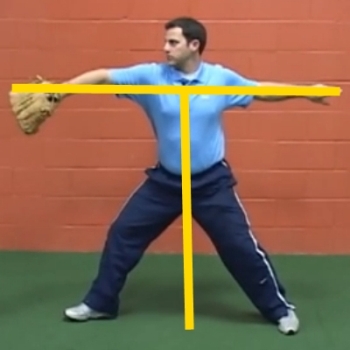
Power T
At some point, someone discovered that ballplayers could throw harder if they keep their arms flat into foot plant instead of trying to get their throwing arm up and in the high-cocked position.
That of course is true, but it ignores the injury implications of deliberately creating a Timing problem and the issues that I discuss in my analysis of Matt Harvey's pitching mechanics.